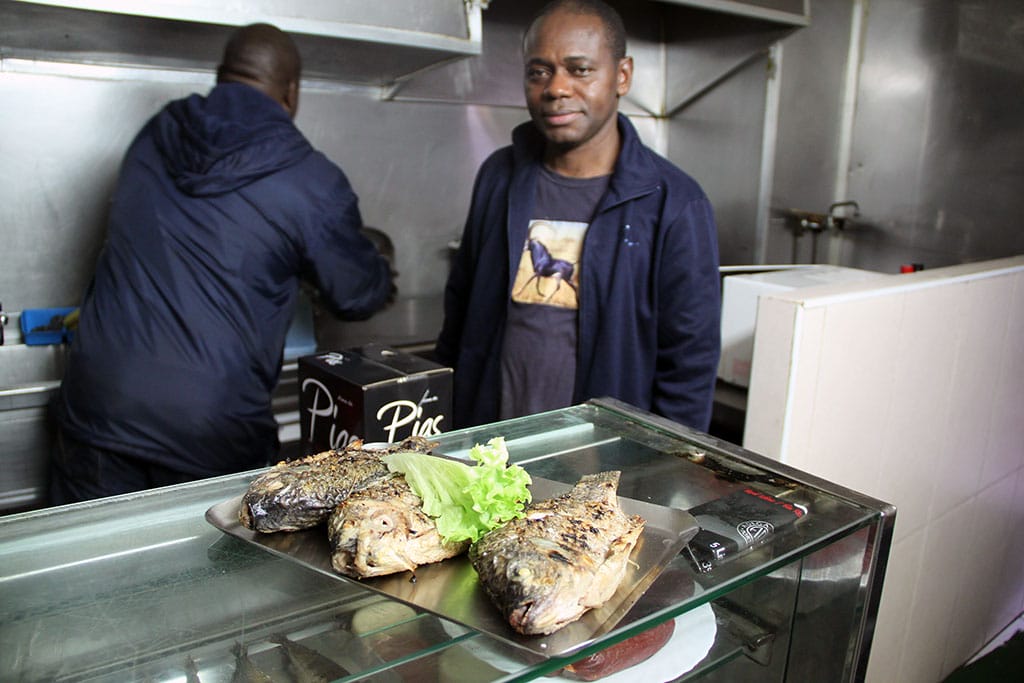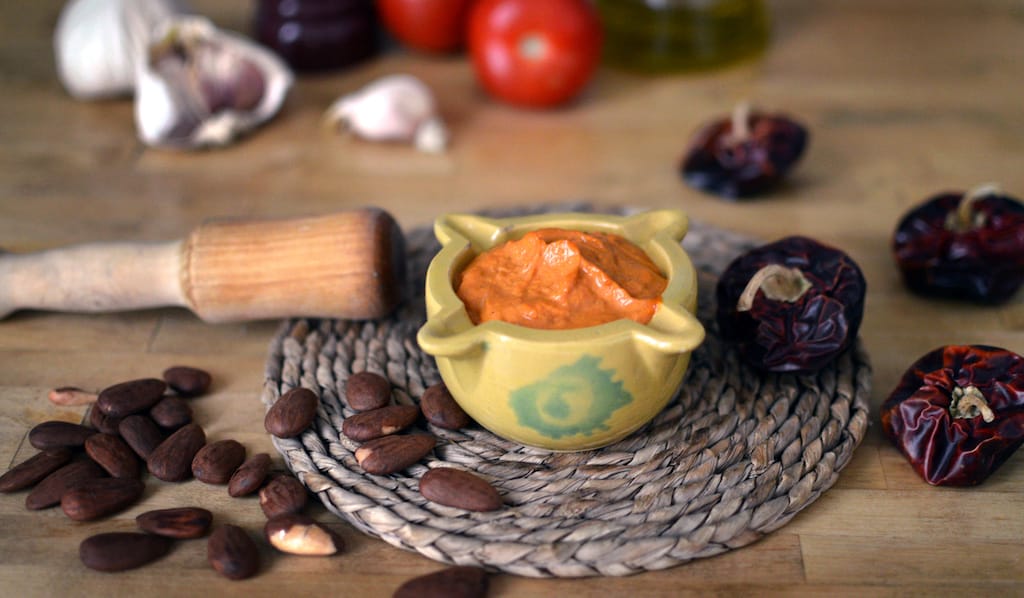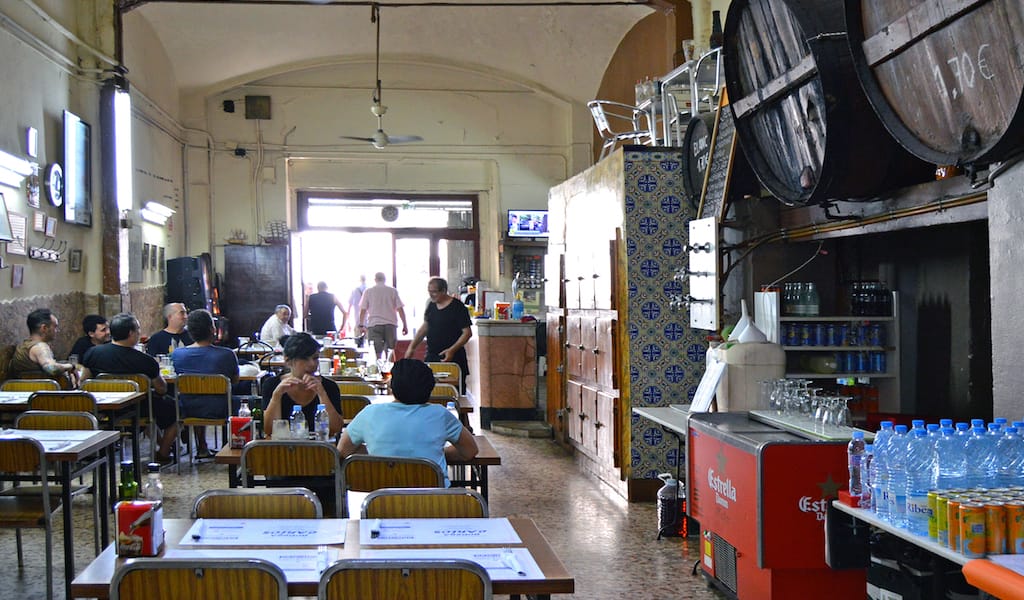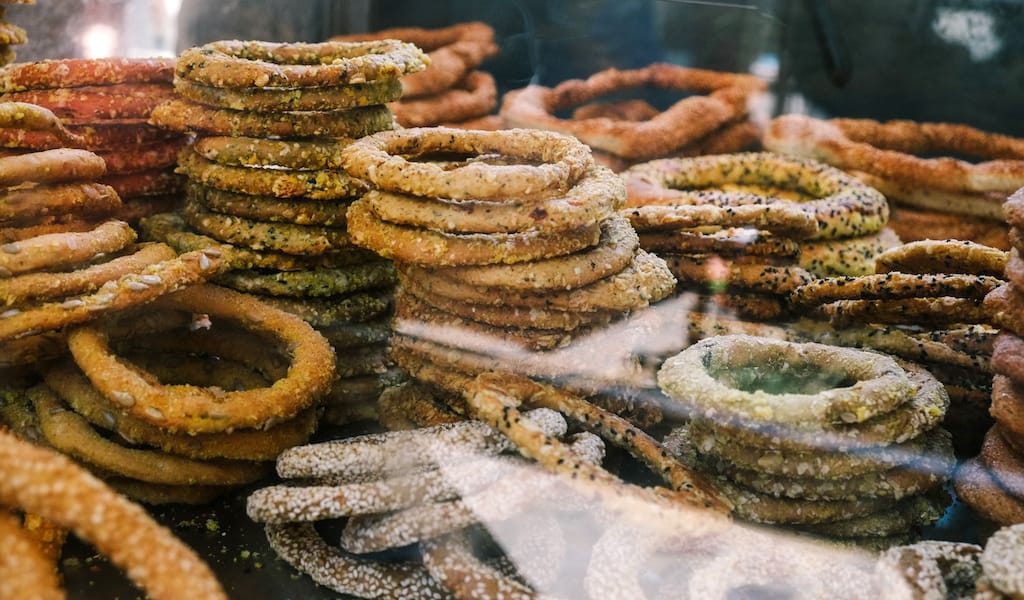Update: This spot is sadly no longer open.
Palanca Gigante is an Angolan tasca in multicultural Mouraria, Lisbon’s medieval downtown district. The restaurant is named after a critically endangered species of antelope (the palanca negra gigante, or giant sable antelope) that was adopted as an Angolan national symbol after that country’s independence from Portugal in 1975. Though regular Portuguese tascas – no-frills eateries – in Lisbon are far less endangered, it is harder to find authentic food from Portugal’s former colonies at such approachable prices in the city center.
The two-room, bare-bones eatery is open every day, serving up classic Angolan dishes amid colorful paintings under bright fluorescent lighting. Its most popular dish is muamba, made with chicken (or better yet, hen meat) marinated with garlic, lemon juice, tomato and gindungo (a type of chili pepper), cooked in a deep pan with a lot of palm oil, onions and okra. What makes the muamba so special at Palanca Gigante is its peanut seasoning, whose recipe is a carefully kept house secret. The sweet flavor contrasts beautifully with the bitter vegetables.
Muamba, as well as other stews on offer, is usually accompanied by funge, a kind of creamy polenta made mainly from cassava. Funge became a classic element of Angolan gastronomy as a result of colonization, after the dish was introduced to Africa by the Portuguese in the 16th century. This cheap and nourishing root, originally from Brazil, was used to feed people on slave-trading ships and was later, in the 18th century, successfully incorporated into the Angolan agricultural system.
The restaurant’s menu, devised by owner Duarte, also features various petiscos, or small plates (similar to Spanish tapas), which reflect the historical and culinary interrelationship between Portugal and Angola. These include moelas, a chicken gizzard stew with a very rich sauce that is typical of both Portugal and Angola; Portuguese chouriço sausages; and Angolan-style cacussos fritos (small fried fish, such as river tilapia) and sumatena (roasted dried fish), which are sourced from an Angolan supplier in Lisbon. There is also bean soup and, among the main courses,  calulu de peixe – a dish made from dried fish (usually sea bream), garlic, okra and sweet potato or spinach – which is popular in Angola as well as on the islands of São Tomé and Príncipe.
calulu de peixe – a dish made from dried fish (usually sea bream), garlic, okra and sweet potato or spinach – which is popular in Angola as well as on the islands of São Tomé and Príncipe.
Duarte learned how to cook from his relatives in the Angolan capital of Luanda in the 1990s, but he never shared his culinary knowledge until he opened Palanca Gigante six years ago. He originally moved to Lisbon to escape the Angolan civil war, which ended only in 2002, and got a job on a building site. “That was the easiest job I could find at the time,” he says. “But then the construction industry was declining all over the city, so I decided to open a restaurant.”
From that moment on, that familiarly enticing smell of muamba would waft through this hidden alley, reaching the other backstreets of Mouraria. In the beginning, the restaurant was only popular among the Angolan community, but nowadays, due to the rehabilitation of the neighborhood, a new clientele is discovering it. “Mouraria has been improved; now we have customers from all over the world, and both residents and tourists are coming to taste our cuisine,” Duarte says. Luckily for him, his rents have stayed stable because of the poor state of the road and the restaurant’s lesser-traveled location. This also means that despite the new customers, prices remain low: Muamba plus funge is €5.50; a glass of wine, 80 cents.
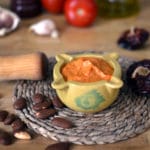 September 15, 2020 Recipe
September 15, 2020 Recipe
Served as a sauce, romesco is certainly striking: It has an intense dark orange color […] Posted in Barcelona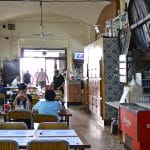 August 2, 2018 Bodega Carlos
August 2, 2018 Bodega Carlos
There we are at Bodega Carlos, enjoying a homey and delicious batch of crispy fried […] Posted in Barcelona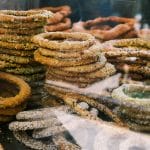 December 5, 2018 Breakfast on the Go in Athens
December 5, 2018 Breakfast on the Go in Athens
Greeks are not a nation of breakfast eaters, so koulouri, a plain, circular bread topped […] Posted in Athens
Published on February 25, 2016
Related stories
September 15, 2020
BarcelonaServed as a sauce, romesco is certainly striking: It has an intense dark orange color and a dense texture that saturates and blankets whatever you dip in it. Once in the mouth, you get a piquant touch of vinegar, which is soon enveloped by the nutty creaminess of ground almonds (or perhaps hazelnuts) and olive…
Eat your way through Sants on our culinary walk!
August 2, 2018
BarcelonaThere we are at Bodega Carlos, enjoying a homey and delicious batch of crispy fried anchovies and succulent stewed pork cheeks, when we suddenly hear birdsong. We look up, but neither canary nor nightingale can be seen flying around the high-ceilinged bodega-restaurant. But then the birdsong instantly switches to a sound we can best describe…
December 5, 2018
Athens | By Culinary Backstreets
AthensGreeks are not a nation of breakfast eaters, so koulouri, a plain, circular bread topped with sesame seeds, tends to be the morning fare of choice for most people. There is something seriously sweet and fresh about these bread rings, which are sold on most street corners in downtown Athens and are a guaranteed encounter…







































